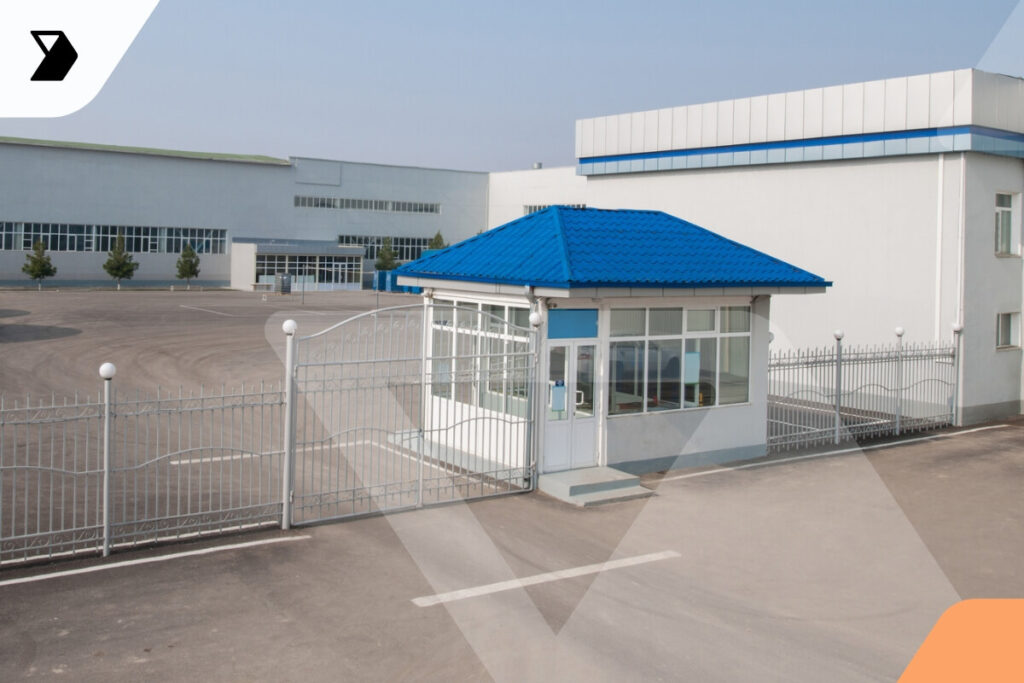Supply Chain Touch Points: Minimize These 6 to Maximize Results
Supply chain management is one of the most important strategic components of modern businesses.
Ready to transform your supply chain?

However, the digitalization of commerce has rapidly changed how people buy products. This has brought new challenges to logistics firms.
August 20, 2020

They need to look for ways to improve delivery supply chain efficiency to decrease their costs while ensuring on-time, free deliveries and returns. Minimizing touch points in the delivery and shipping process can help businesses be more efficient.
This post will discuss some ideas for trucking firms to minimize supply chain touch points and the major benefits they can derive from them.
Digital Commerce Has Brought New Challenges and Opportunities
In the olden days, customers would go to a brick-and-mortar store to shop for items on the shelf. This meant that retailers could deliver a relatively fixed number of goods on a regular schedule to predetermined retail stores. Managing the supply chain for such a model was easier and predictable. However, people now demand and expect a wide variety of product options right from their smartphones and laptops. The demand for every product from any region can fluctuate at any time. Thus, manufacturers and retailers have to cater to this new omnichannel commerce. This makes the distribution and supply chain processes much more complex and difficult to plan for.
Offering free or inexpensive shipping to consumers has added a significant cost for traditional retailers. Customers also expect faster deliveries. Next-day delivery is a major trend nowadays. Building a process that can fulfill these demands requires efficient warehouse inventory management. However, businesses will have to account for transportation and faster delivery costs. Customer returns are also a key modern trend that is complicating things further for retailers. Retailers are expected to absorb these additional reverse logistics costs as well. Thus, manufacturers, retailers, and logistics firms need to meet these new customer demands while optimizing supply chain operations to deliver in a cost-efficient manner.
However, the digital trend also gives businesses new opportunities. It’s easier than ever to gather key customer data. Retailers can engage with every customer digitally at every stage of the purchase. This unprecedented access to data helps firms gather product feedback, information about customer needs, and market insights. We’re also seeing a growing trend of selling directly to consumers through direct-to-consumer delivery options.
Thus, logistics firms and retailers need to optimize their supply chain processes to reduce their operational costs without sacrificing customer satisfaction.
6 Supply Chain Touch Points to Minimize
1. Minimize Manual Data Entry and Indexing
There are multiple touch points in the delivery process that require manual data entry. There are tons of data that need to be recorded and passed on to the back office. This includes check-in documents, dock-door assignments, proofs of delivery (POD), bills of lading (BOL), pick sheets, seal verification, and other required shipment documents. At the back office, the staff needs to process, verify, and validate these documents. Then, they need to manually index them and upload them into the document management system. These manual tasks add unnecessary touch points for the driver, warehouse manager, and the back-office staff. To minimize these touch points, trucking firms can leverage mobile scanning tools and document management systems.
2. Minimize Paper Trail of Documents
Most trucking and shipping firms depend on a paper trail of documents such as accident reports, trip sheets, OS&D reports, detention papers, driver referrals, and eDVIRs. This non-digital, paper-driven process is inefficient and costly. Moving these forms from the drivers and warehouses to the back office adds many touch points to the delivery process. This ordeal can take several days for the back office to collect and consolidate these paper documents.
This paper-heavy process not only wastes unproductive hours of the employees but also adds considerable operational costs. Sometimes, documents can go missing, which may cause delays in delivery, leading to frustrated customers. It’s fairly common for the back office to send invoices 90 to 100 days late because of missing proof of delivery documents from drivers. This means the firm gets paid really late. Thus, businesses should look into digitizing this whole process of document collection and management through tools such as Vector’s custom workflow solution.
3. Minimize Warehouse Inventory Waiting Time
Delivery processes can also derive from the principles of just in time (JIT), the main component of lean production. JIT inventory management is a supply chain strategy where the goods are delivered to a warehouse or shipping port “just in time” before they are picked up by the next mode of transport. This will reduce the inventory waiting time, or idle time, of the goods.
Having goods just sit in warehouses and delivery hubs is a waste. However, implementing JIT inventory management needs accurate demand forecasting and route planning. Demand forecasting and inventory control can be achieved through inventory management tools such as Finale Inventory. Optimized route planning is another critical strategic component for every logistics firm, as discussed next.
4. Minimize Delivery Route Length
One of the main ways to minimize the touch points during a delivery process is to plan the shortest route. However, this is easier said than done. Truck routing optimization is one of the key components of supply chain management for every trucking and logistics firm. Modern tools such as Locus leverage artificial intelligence to plan the best route for a delivery. Its last-mile routing and dynamic route planning tools use tons of delivery data to calculate the shortest and fastest possible route.
5. Minimize Partial Truckloads at Less Than Full Capacity
In addition to planning more efficient routes, you also have to be prudent when planning the batch sizing. Moving goods with two truckloads or shipments at full capacity rather than four or five different batches at 60-70% capacity significantly reduces the touch points. It also provides massive savings for the logistics and trucking firms. Optimizing the batch sizing, once again, depends on sophisticated demand forecasting. Trucking firms can also use LTL (less than truckload) services to save costs in case they can’t wait for a full truckload of goods or don’t want to pay for a small amount of freight on a big, empty truck.
6. Minimize Truck Drivers’ Delivery Tasks
Traditional delivery methods require the driver to perform a lot of tasks at delivery and pickup sites. They collect multiple documents, fill out a number of forms, and perform checks. Minimizing these tasks will also reduce some touch points in the delivery process. Empowering the drivers with digital tools such as Vector’s contactless pickup and delivery helps automate this driver workflow and reduce the manual tasks for the driver. In fact, such solutions also help minimize two more points we mentioned above—minimizing manual data entry and minimizing the paper trail of documents. Thus, just two or three key digital tools and habits can drastically help reduce the supply chain touch points.
Why Optimize Supply Chain Touch Points
So, you’ve seen which supply chain touch points you should minimize, but maybe you’re wondering if you really need to. There are a number of benefits to be gained from optimizing these touch points.
Reduce Operational Costs
Each additional touch adds costs to the overall process. Storing the goods and products as you wait for the next step adds inventory costs. Having unnecessary touch points like multiple distribution centers and warehouses before final delivery also adds to the final cost. Even minor improvements in supply chain efficiency can result in millions of dollars in savings for businesses.
Reduce the Risk of Error and Time Delays
Each touch across the entire chain increases the chances of errors. For example, if the product passes through five warehouses and six different vehicles, the chances of something going wrong are higher.
Even one misplaced inspection or delivery paper form at any of these stages can cause trouble. Moreover, each step, with its manual data entry, will add to the error-prone paper trail to and from the back office. The higher number of steps also increases the probability of delay at one of the steps.
Increased Capacity
Optimizing the supply chain and distribution process enables businesses to get the maximum from their assets. Thus, instead of many vehicles and storage facilities at, say, 60-70% capacity, businesses can use fewer of them at close to 100% for better efficiency.
Minimizing the touch points will also enable businesses to utilize a lower number of assets per delivery. This results in an increased overall capacity, as the same number of warehouses, drivers, and trucks can now fulfill a much higher demand. Fewer responsibilities for the driver at every part of the logistics process will also empower them to make faster deliveries.
Capture Granular Information
Businesses need access to extremely granular data from every step of the supply chain to really improve and optimize the whole process. They need sophisticated digital monitoring and traceability tools to collect this data.
Tools such as Vector’s custom workflow solution help to collect the driver workflow data digitally. This digital workflow also minimizes the touch points for your driver as well as the back office.
Artificial intelligence and predictive analytics can then help accurately forecast demand by analyzing this data. It will help businesses predict the quantity of each product to send to which location and when. Such insights help logistics firms plan out and optimize the shipping and storage to achieve economies of scale.
Minimize Touch Points to Gain a Competitive Advantage
Modern customers demand fast and free delivery and free return policy. These new expectations have put a lot of strain on logistics costs and customer satisfaction. Thus, logistics firms need to constantly find ways to optimize their delivery operations. This will help them reduce their costs, minimize errors, maximize their profit margins, and increase customer satisfaction. This will also help build a strong competitive advantage.
There are many tools, like Vector’s custom workflow solution, that minimize supply chain touch points, including manual data entry, the paper trail of documents, and the driver’s tasks. AI and predictive data analysis also can be leveraged to minimize inventory waiting time, optimize the delivery route, and maximize shipments at full capacity.
This post was written by Aditya Khanduri. Aditya currently handles product and growth at Cryptio.co, and he’s also built a couple of B2B products. He’s proficient in data analysis with Python and has worked with multiple startups in the blockchain and artificial intelligence sector.
Subscribe to stay updated on Vector and logistics trends
Continue reading
Ready to transform your supply chain?
Increase efficiency and productivity. Say goodbye to delays, handwriting errors, and time-intensive manual data entry.




